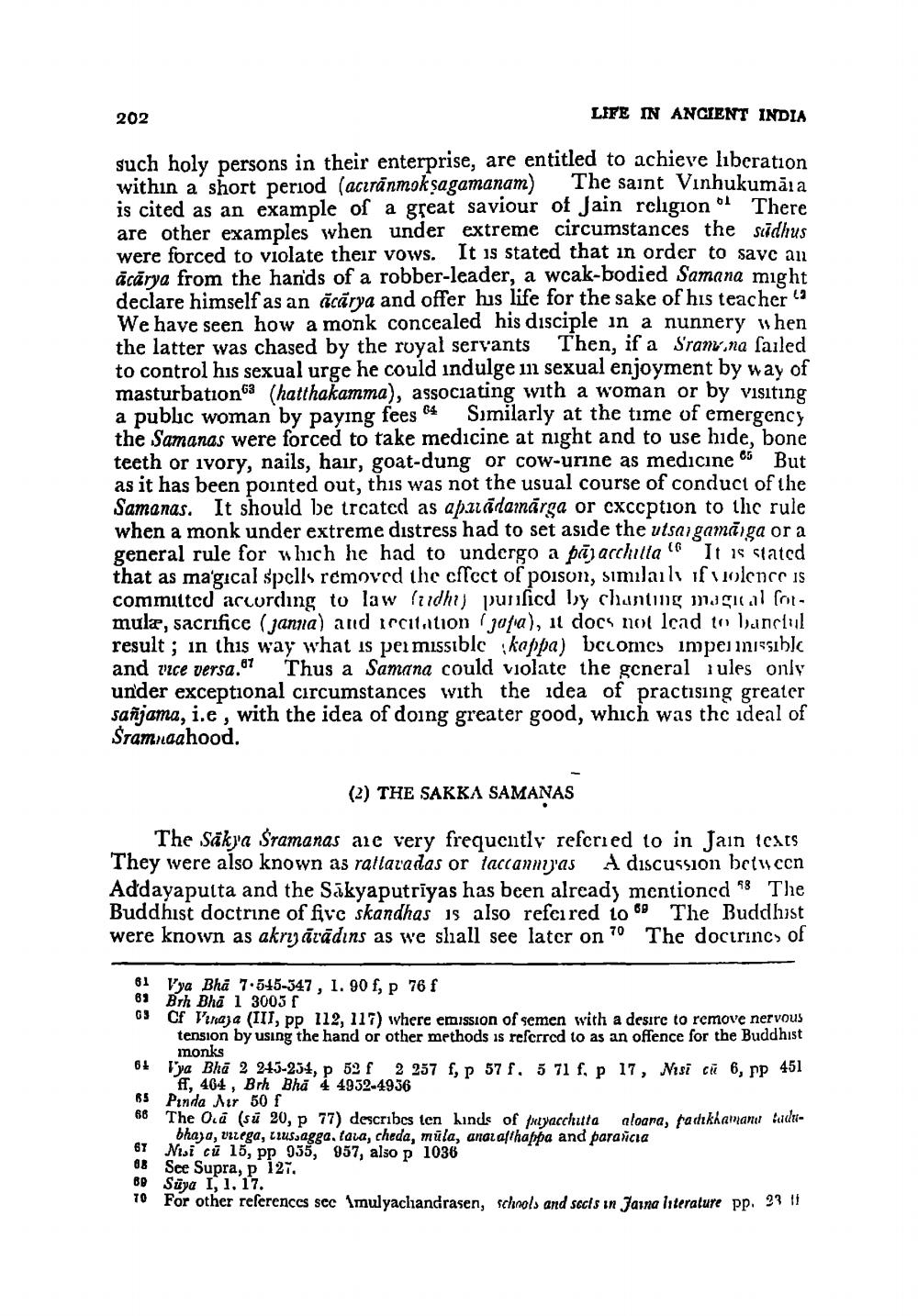________________
202
LIFE IN ANCIENT INDIA
such holy persons in their enterprise, are entitled to achieve liberation within a short period (aciranmok sagamanam) The saint Vinhukumāla is cited as an example of a great saviour of Jain religion 1 There are other examples when under extreme circumstances the sudhus were forced to violate their vows. It is stated that in order to save an ācārya from the hands of a robber-leader, a wcak-bodied Samana might declare himself as an ācārya and offer his life for the sake of his teachers We have seen how a monk concealed his disciple in a nunnery when the latter was chased by the royal servants Then, if a Sramu,na failed to control his sexual urge he could indulge in sexual enjoyment by way of masturbation (hatthakamma), associating with a woman or by visiting a public woman by paying fees 64 Similarly at the time of emergency the Samanas were forced to take medicine at night and to use hide, bone teeth or ivory, nails, hair, goat-dung or cow-urine as medicine 6 But as it has been pointed out, this was not the usual course of conduct of the Samanas. It should be trcated as aparādamārga or cxccption to the rule when a monk under extreme distress had to set aside the utsai gamăiga or a general rule for which he had to undergo a pājarchitla 6 It is stated that as magical spells removed the cffcct of poison, similarly if violence is committed according to law fidhi) purisicd ly chanting mga lotmulæ, sacrifice (janna) and ircitation (pofia), il docs not lead to lanciul result; in this way what is permissible kappa) becomes impermissible and vice versa.07 Thus a Samana could violate the general iules only under exceptional circumstances with the idea of practising greater sañjama, i.e, with the idea of doing greater good, which was the ideal of Sramnaahood.
(2) THE SAKKA SAMANAS
The Säkya Sramanas are very frequently referied to in Jain tears They were also known as rallaradas or taccanmyas A discussion between Addayaputta and the Sākyaputriyas has been already mentioned * The Buddhist doctrine of five skandhas is also referred to The Buddhist were known as akri, īrādins as we shall see later on 70 The doctrine of
81 Vya Bha 7.545-547, 1. 90f, p 76 f 83 BTh Bhi 1 3005 f 0 Cf Vinaja (III, pp 112, 117) where emission of semen with a desire to remove nervous
tension by using the hand or other methods is referred to as an offence for the Buddhist
mnonks L'ya Bhā 2 243-234, p 52 F 2 257 f, p 57 f. 571 f, p 17, Nisi ci 6, pp 451
ff, 464 , Brh Bhā 4 4932-4936 Pinda Air 50 f The Oca (sů 20, p 77) describes ten kinds of peyacchuta aloara, padıkhanani ludi
bhaja, vizega, cius,agga, tara, cheda, müla, anaz afthappa and parancia 67 Nisi cũ 15, pp 935, 957, also p 1036 08 See Supra, P 127. BP Süya 1, 1. 17. 70 For other references sec Imulyacliandrasen, schnols and socis in faina literature pp. 33"




